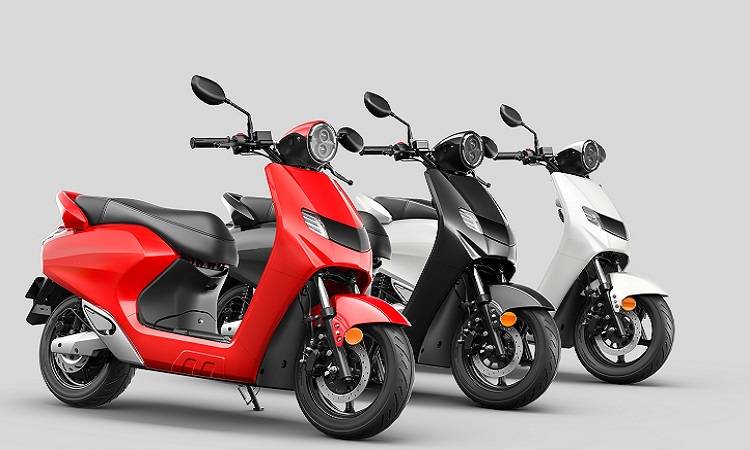Air-Cooled vs. Oil-Cooled vs. Liquid-Cooled Engines: Key Differences
Air-Cooled vs. Oil-Cooled vs. Liquid-Cooled Engines: Key Differences

India’s extreme weather and traffic conditions demand an efficient engine cooling system for a smooth ride. Whether buying a new vehicle or maintaining one, understanding air-cooled vs. oil-cooled vs. liquid-cooled engines helps in making informed decisions. The right cooling system enhances engine performance and minimises maintenance costs, which can also impact long-term expenses, including bike insurance.
What are Air-Cooled Engines?
Air-cooled engines use airflow to dissipate heat. They feature cooling fins that increase surface area, allowing heat to escape. As the vehicle moves, the air passing over these fins helps regulate temperature.
Advantages
• Simple and Reliable
Fewer components mean lower chances of mechanical failure.
• Lightweight
The absence of radiators or pumps reduces weight, improving efficiency.
• Affordable Maintenance
Repairs and servicing are cost-effective.
• Ideal for Two-Wheelers
Works well in moderate climates and low-power vehicles.
Disadvantages
• Limited Cooling Efficiency
Struggles in high temperatures or during prolonged use.
• Noisy Operation
The lack of insulation increases engine noise.
• Performance Variability
Cooling efficiency depends on speed and ambient conditions.
What are Oil-Cooled Engines?
Oil-cooled engines enhance cooling by circulating oil through a cooler before it re-enters the engine. This method balances simplicity with better heat management.
Advantages
• Better Heat Dissipation
Reduces overheating risks.
• Moderate Complexity
More efficient than air-cooled engines without being overly complicated.
Disadvantages
• Higher Maintenance Needs
Requires regular oil changes and system checks.
• More Complex Than Air-Cooled Engines
Additional components increase potential failure points.
What are Liquid-Cooled Engines?
Liquid-cooled engines use a coolant that absorbs heat, passes through a radiator, and circulates back into the system. This provides superior and consistent temperature control.
Advantages
• Superior Cooling Efficiency
Performs well in extreme conditions.
• Quieter Operation
Coolant acts as an insulator, reducing noise.
• Consistent Performance-
Ensures optimal function regardless of external temperatures.
Disadvantages
• Higher Cost
Expensive to manufacture and maintain.
• Complex Design
Requires radiators, hoses, and coolants.
• Potential Leaks
Any failure in seals or hoses can cause coolant loss.
Comparative Analysis: Air-Cooled vs. Oil-Cooled vs. Liquid-Cooled Engines
| Feature | Air-Cooled | Oil-Cooled | Liquid-Cooled |
| Cooling Efficiency | Basic | Moderate | Excellent |
| Maintenance | Low | Moderate | High |
| Noise Level | High | Moderate | Low |
| Cost | Low | Moderate | High |
| Best Suited For | Small two-wheelers | Mid-range vehicles | Performance bikes & extreme conditions |
Conclusion
Choosing between air-cooled vs. oil-cooled vs. liquid-cooled engines depends on your needs. While air-cooled engines are simple and affordable, oil-cooled engines offer better performance. Liquid-cooled engines provide superior cooling but come at a higher cost. For maintaining long-term engine health, having comprehensive two-wheeler insurance is essential.
Disclaimer: The above information is for illustrative purposes only. For more details, please refer to the policy wordings and prospectus before concluding the sales.
RELATED ARTICLES
What Does an Air Cooling System Mean?
How to Save the Battery of Your EV from Excessive Heat?
Types of Engine Oil for Bikes: Benefits, Uses, and Best Options
8 Tips for Your Bike's Engine Care: Keep Riding Smooth
Is Bike Insurance Valid for 5 Years?










 Health Insurance
Health Insurance  Travel Insurance
Travel Insurance  Car Insurance
Car Insurance  Cyber Insurance
Cyber Insurance  Critical Illness Insurance
Critical Illness Insurance
 Pet Insurance
Pet Insurance
 Bike/Two Wheeler Insurance
Bike/Two Wheeler Insurance  Home Insurance
Home Insurance  Third Party Vehicle Ins.
Third Party Vehicle Ins.  Tractor Insurance
Tractor Insurance  Goods Carrying Vehicle Ins.
Goods Carrying Vehicle Ins.  Passenger Carrying Vehicle Ins.
Passenger Carrying Vehicle Ins.  Compulsory Personal Accident Insurance
Compulsory Personal Accident Insurance  Travel Insurance
Travel Insurance  Rural
Rural 











